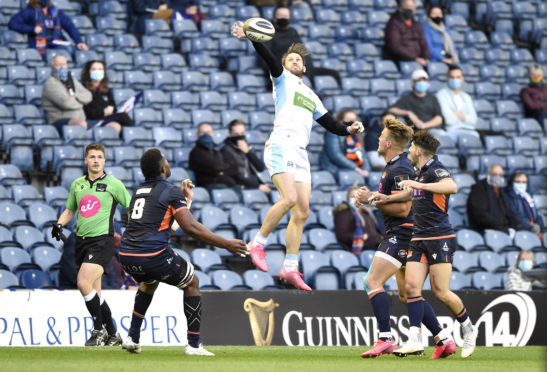Scotland will play their outstanding 2020 Six Nations match against Wales at Parc Y Scarlets in Llanelli with no fans, but Scottish Rugby are sticking to their plans to have as many as 20,000 at BT Murrayfield for October and November games.
Despite new restrictions imposed this week throughout Britain in an attempt to halt a second wave of the coronavirus pandemic, the authorities at Murrayfield have still not given up hope of having some fans for their four international matches to be held at the stadium later this year.
The SRU also believe they have a case for allowing up to 5000 fans into Edinburgh and Glasgow Guinness PRO14 games, although the league starts next week and all fans will be prohibited from sporting events for at least the next three weeks.
Meanwhile the national team will play at an empty 14,870 capacity Parc Y Scarlets on October 31 in the game that was postponed at 24 hours’ notice as sport locked down with the rest of society at the initial Covid-19 outbreak in March.
The Welsh Rugby Union had been looking at hosting the game in London while the Principality Stadium is still earmarked as an emergency hospital, with the Tottenham stadium, Arsenal’s Emirates Stadium, Wembley and Twickenham mooted as places which could house a social-distanced crowd.
However this week’s announcements of increased restrictions on larger numbers of people with a second wave of infections feared has convinced the WRU to play their first two matches of the enlarged November international schedule at Llanelli.
“We anticipate the games will take place behind closed doors, however, if the “big picture” changes, we would be open to exploring whether a game could serve as a test event for crowds,” said WRU chief executive Steve Phillips.
The WRI are still examining whether two later fixtures in November, against England and the Nations League play-off match that ends the schedule, could be played in London but the likely option is that both will be played at Llanelli.
The SRU haven’t given up hope of having as many as 20,000 fans at Murrayfield fixtures in the autumn, however, and have made a case on the back of the successful pilot run at the Edinburgh-Glasgow fixture in August, when a total of 1000 people were admitted to the stadium.
The Scottish Government haven’t yet ruled out fans at those games yet even after yesterday’s tightening of restrictions, saying that the decision to ban fans would be reviewed in three weeks.
Fixtures for the PRO14 were revealed yesterday, with South African sides still in the competition although they won’t play any games until 2021.
The Kings were withdrawn from the competition last month, but the Cheetahs will continue and SA Rugby is currently determining which of their other professional franchises which have historically played in Super Rugby will take their place.
That’s taken as an indication that all four former Super Rugby franchises – the Stormers, Lions, Bulls and Sharks – will join the league in season 2021-22, as they no longer are competing in the Southern Hemisphere competition.
The fixtures in the initial part of the season will feature Monday night games to avoid clashes with international matches.
Glasgow’s hosting of champions Leinster at Scotstoun on November 2 will be the first Monday night game featuring one of the Scottish pro teams, while Edinburgh will host Cardiff a week later.
Both Scottish teams launch their season a week on Saturday, October 3, with Glasgow at Connacht while Edinburgh host Ospreys at Murrayfield.
The first two 1872 Cup derby matches will be played as usual around Christmas and New Year.
